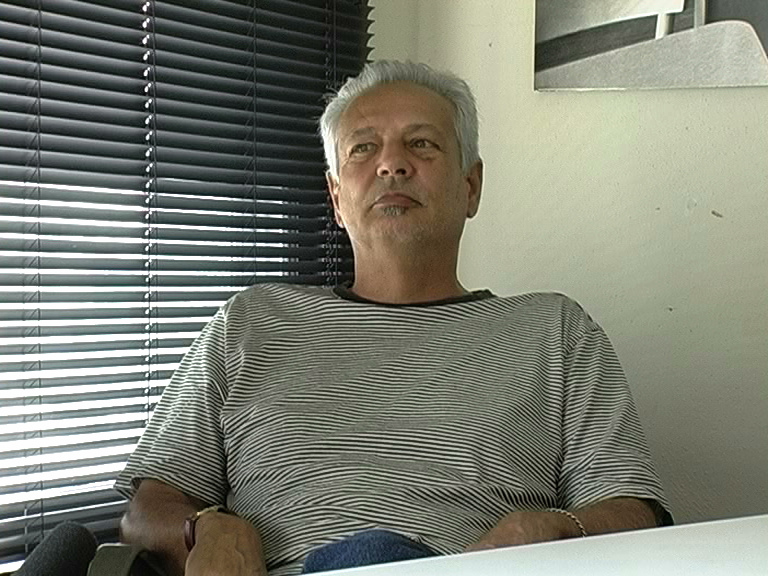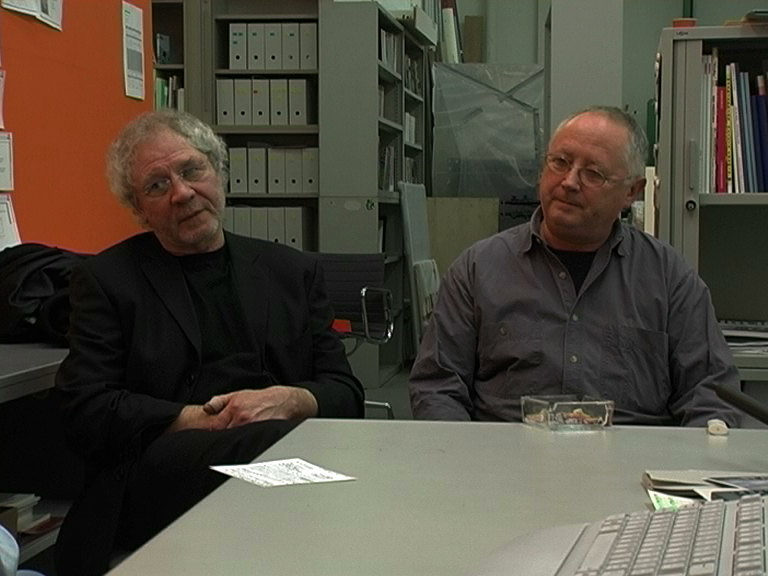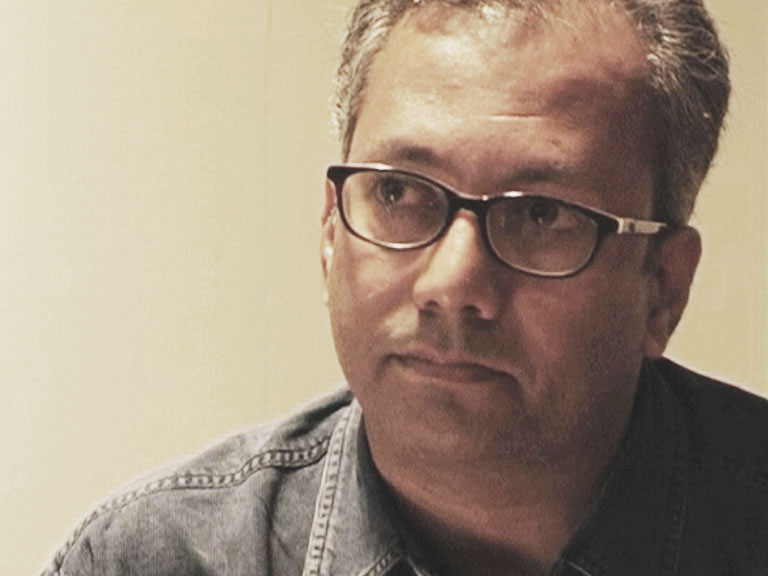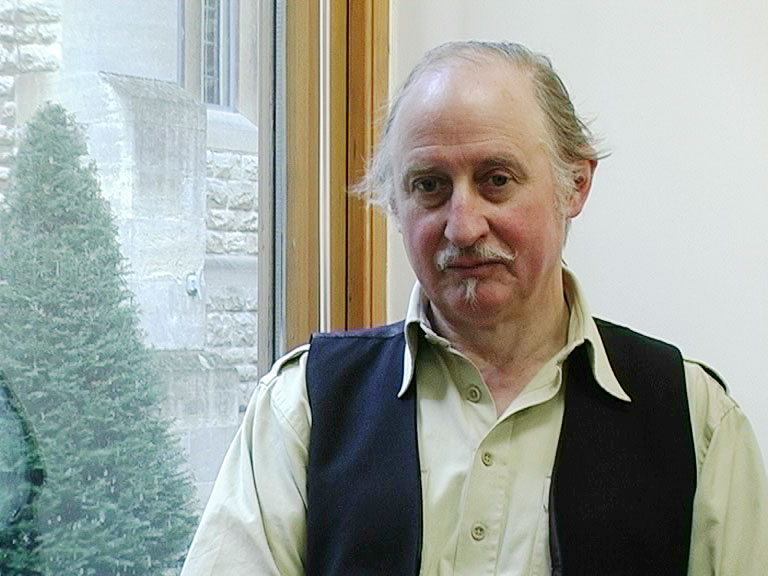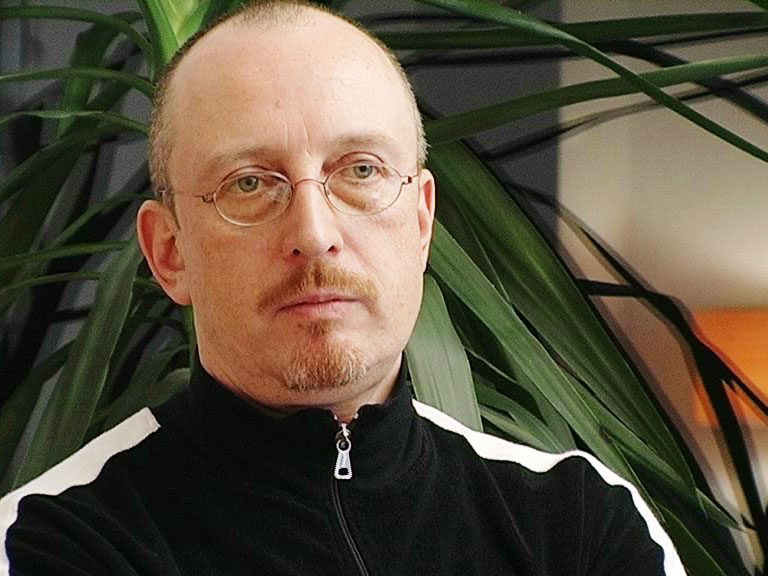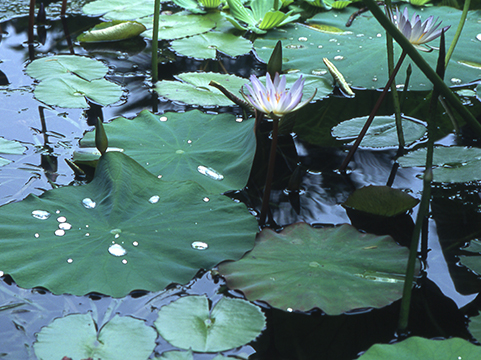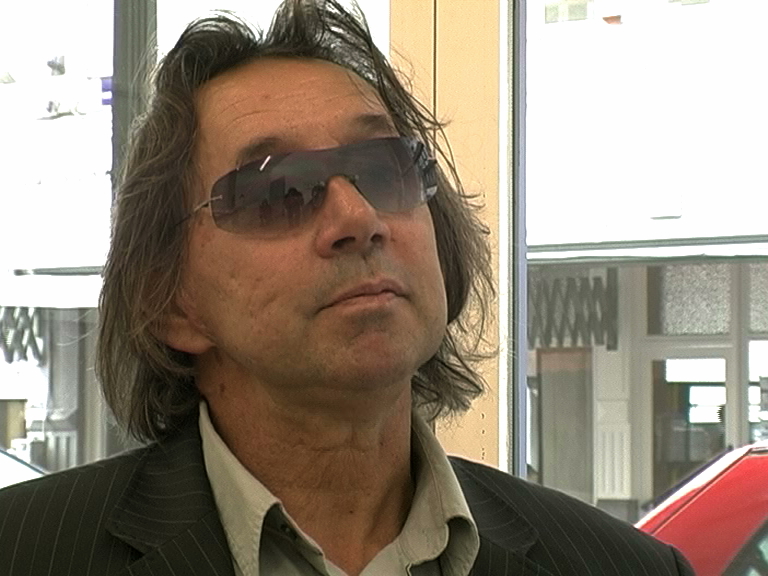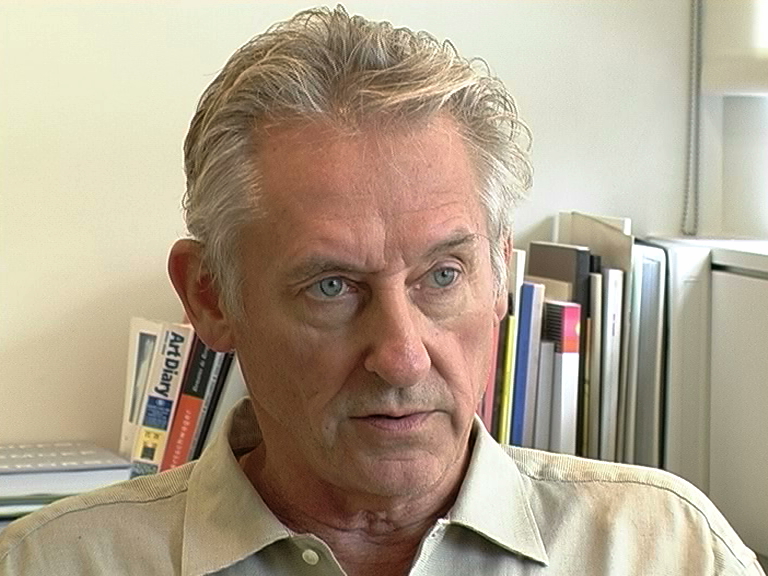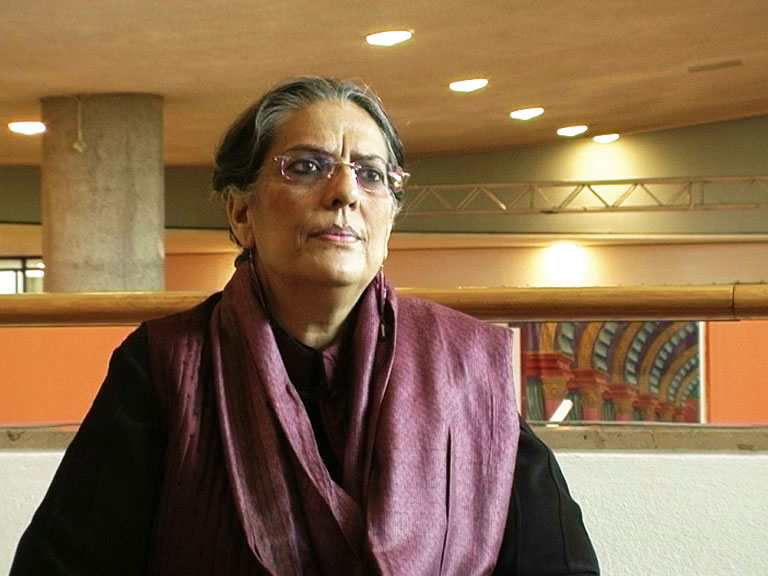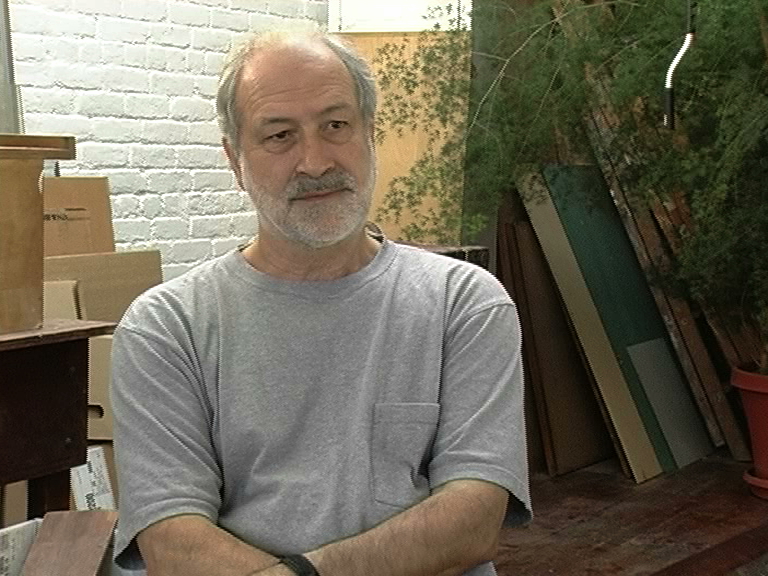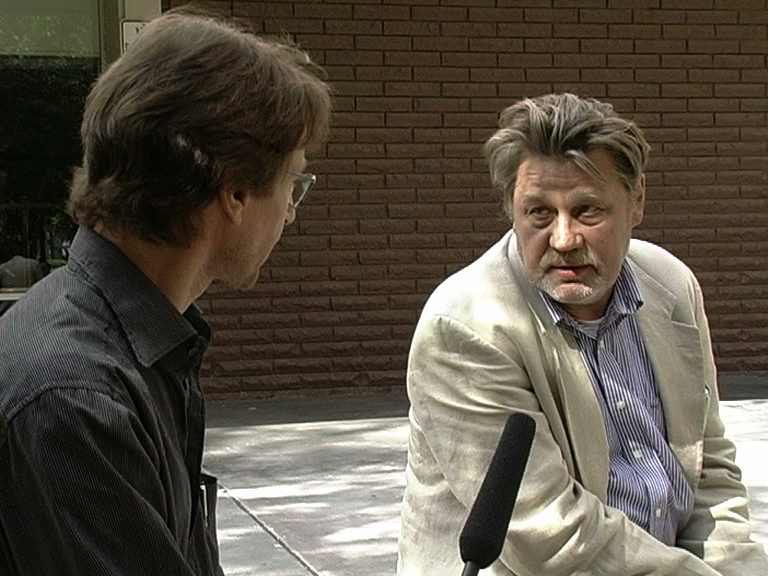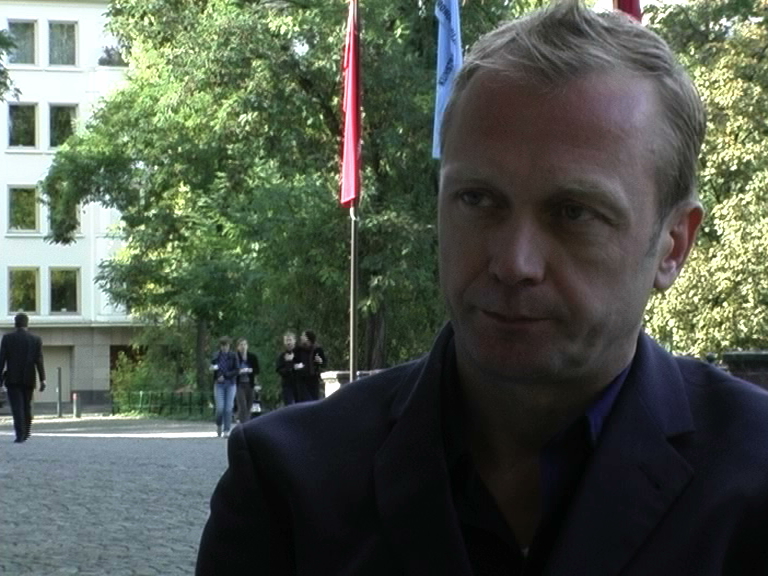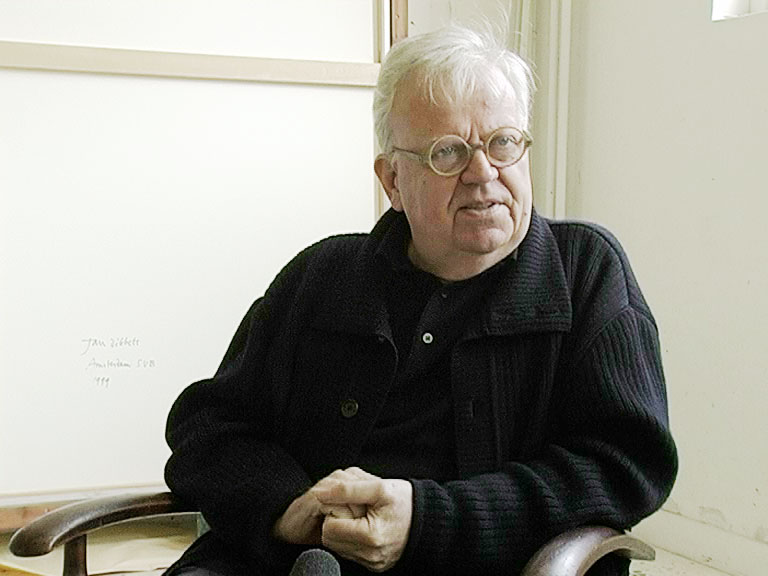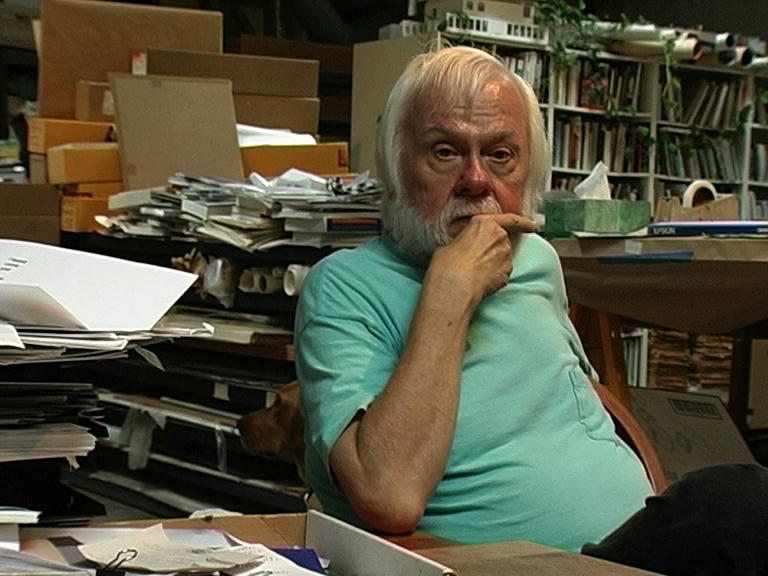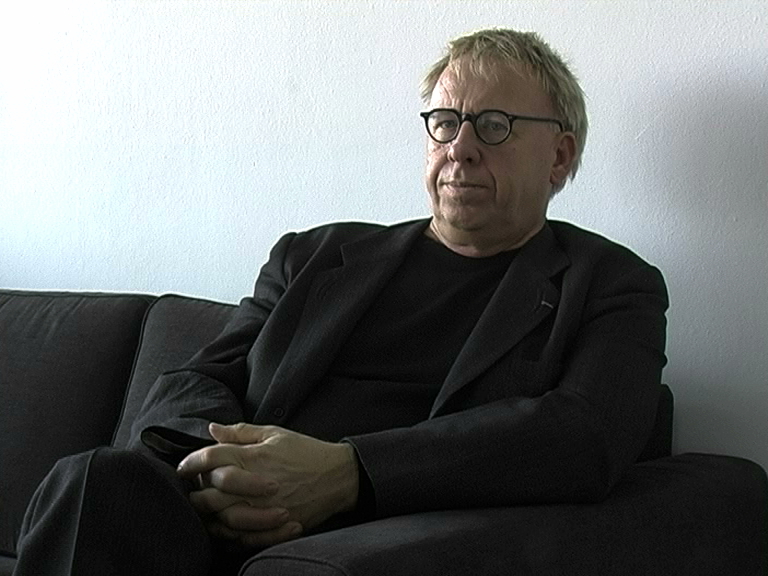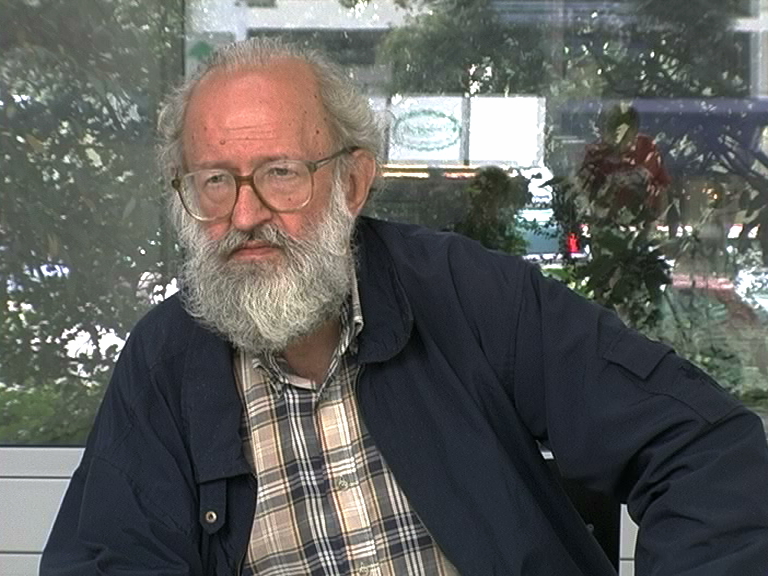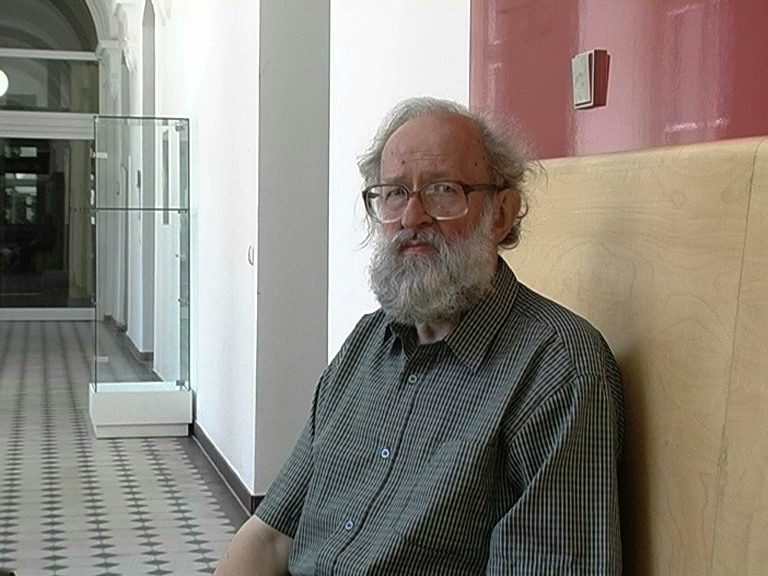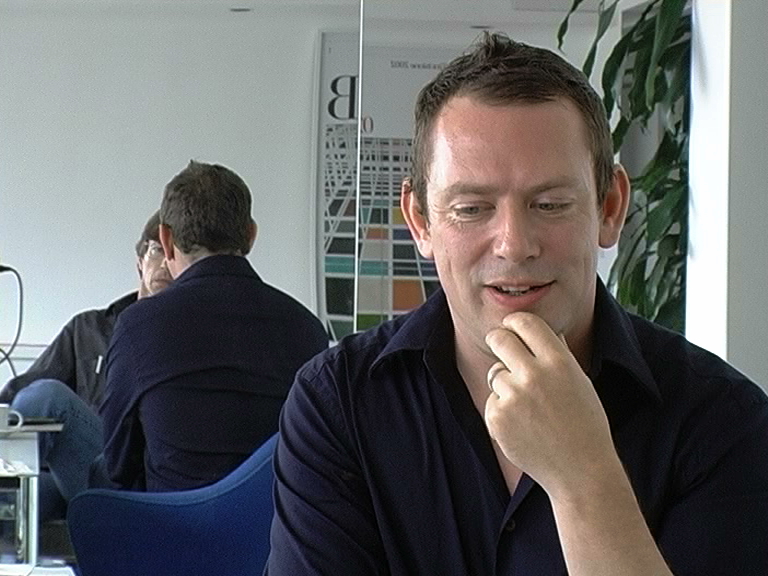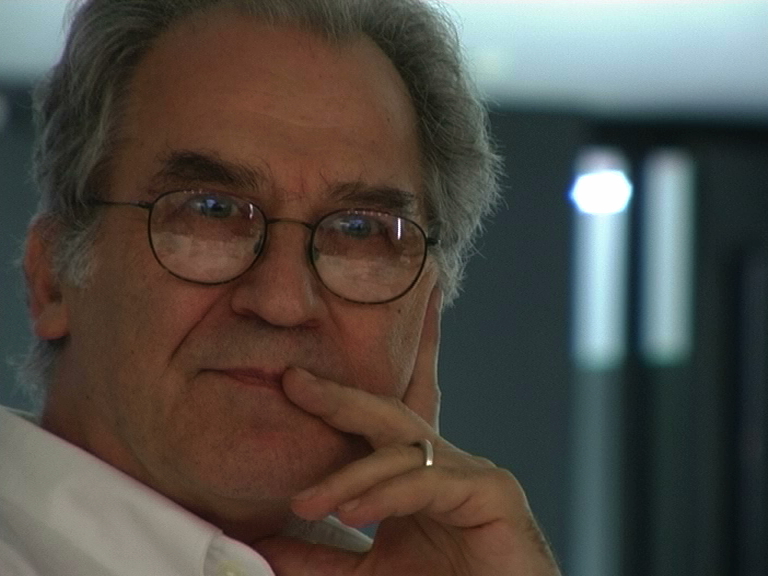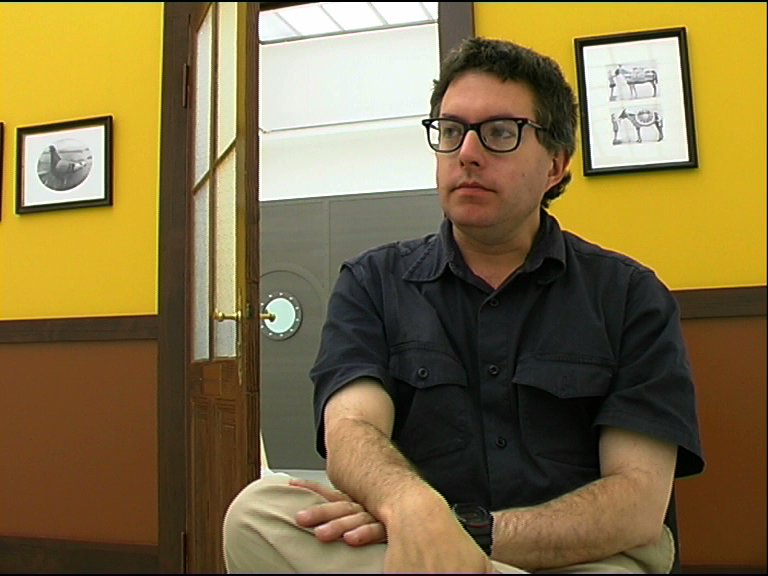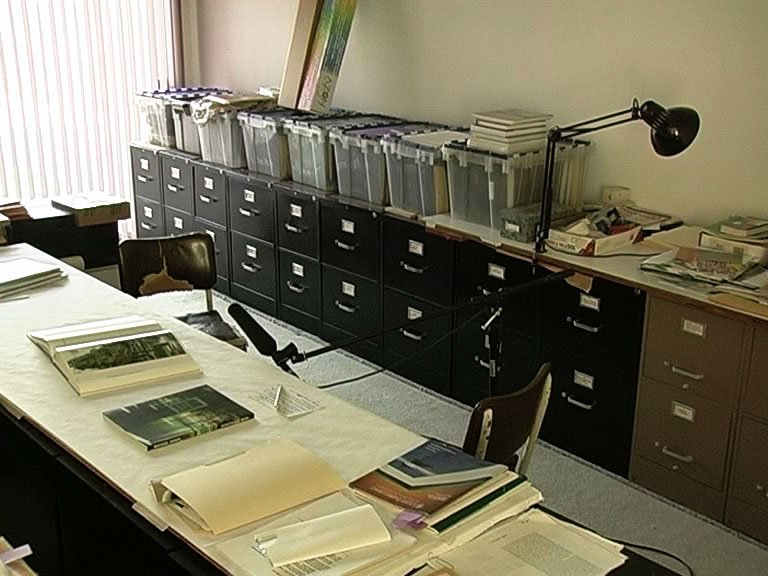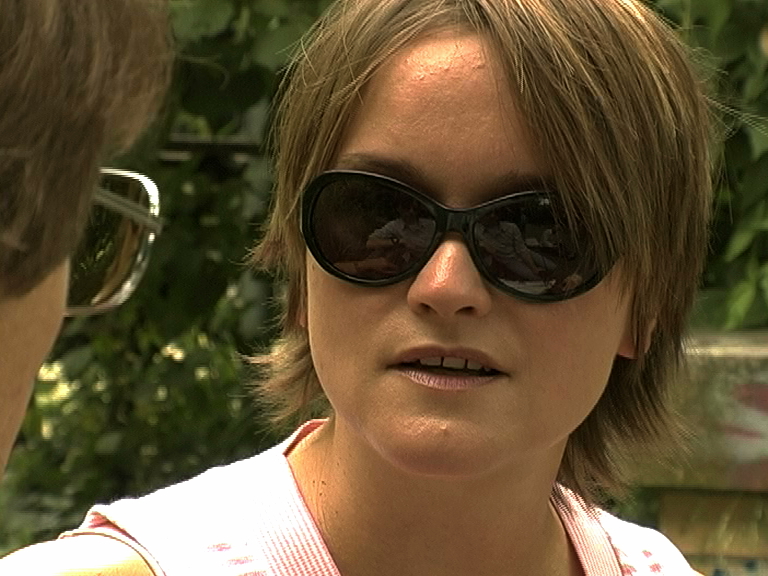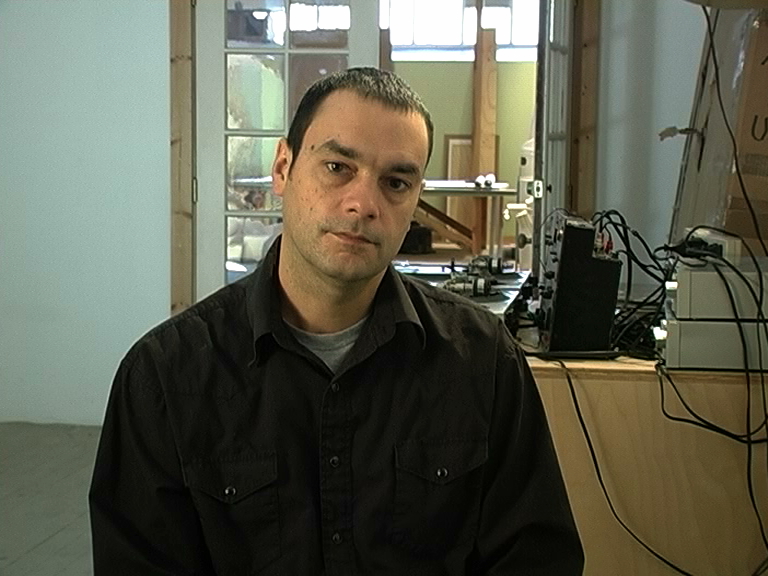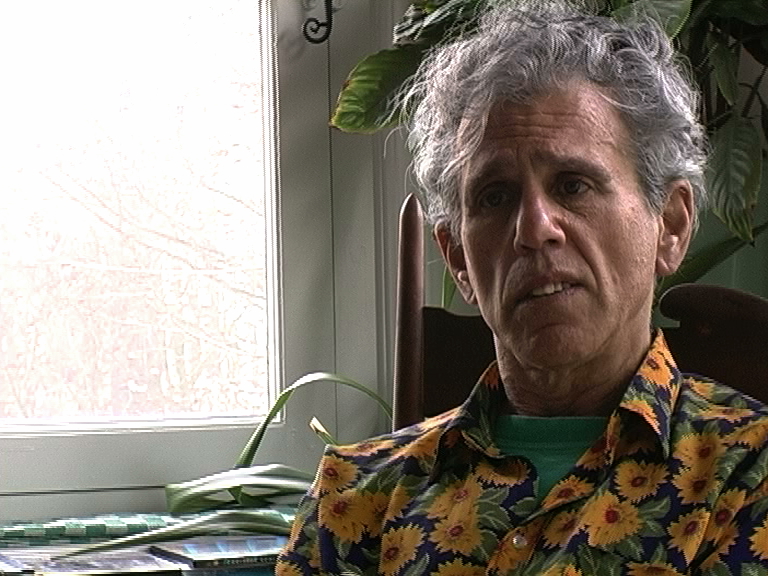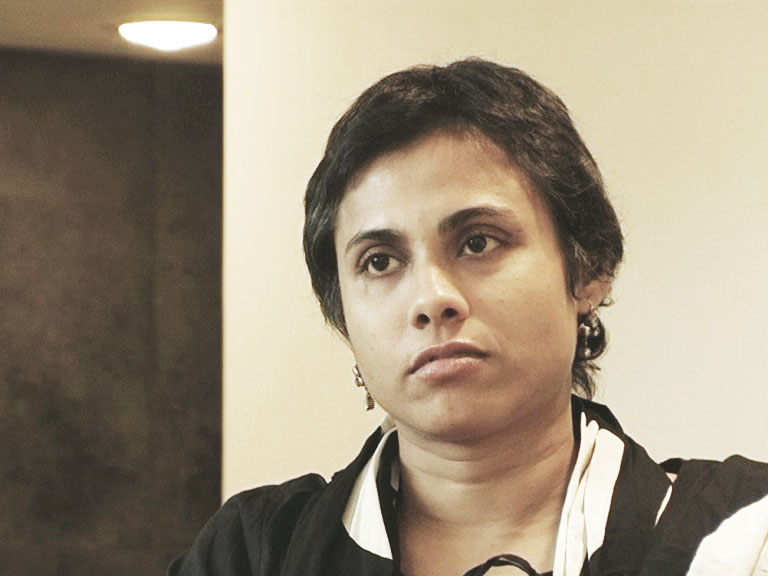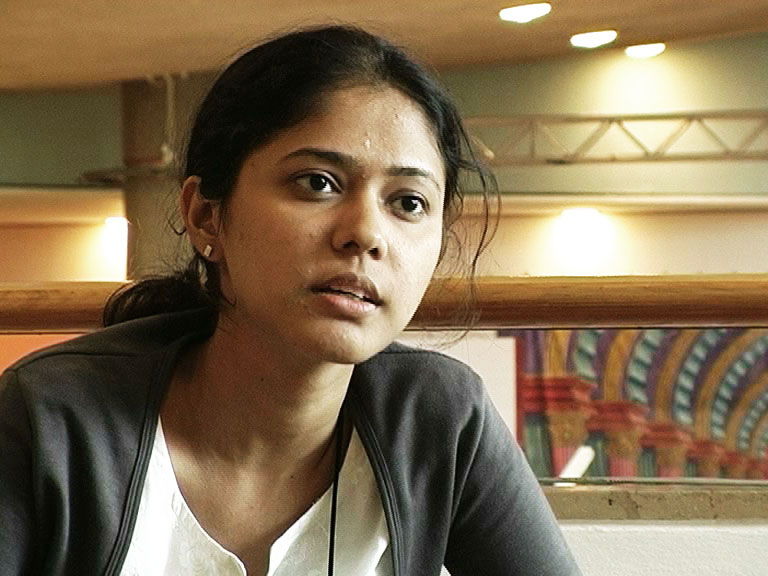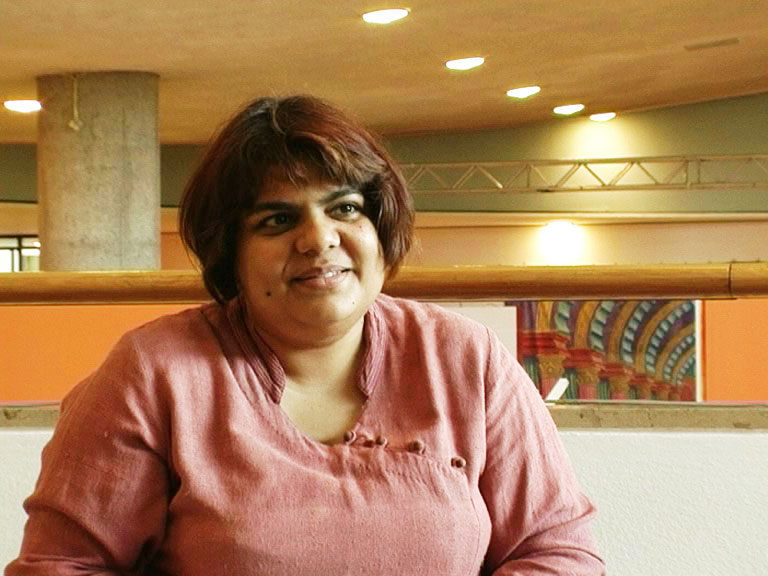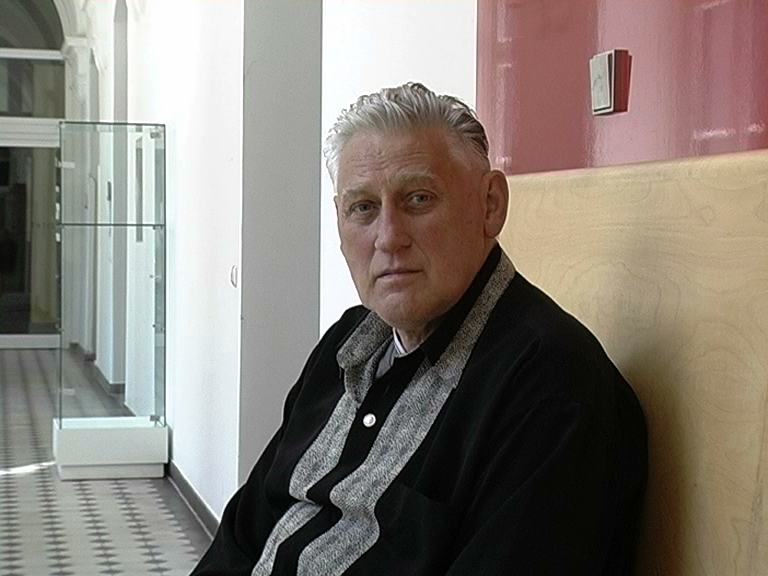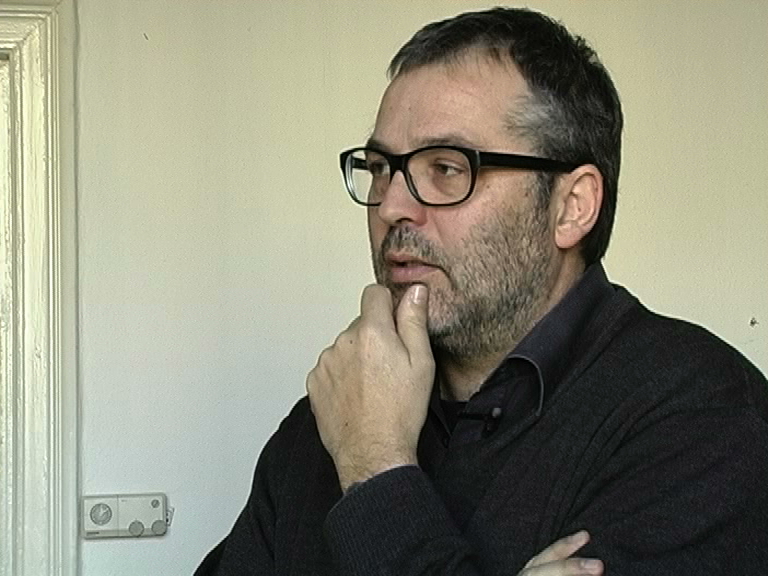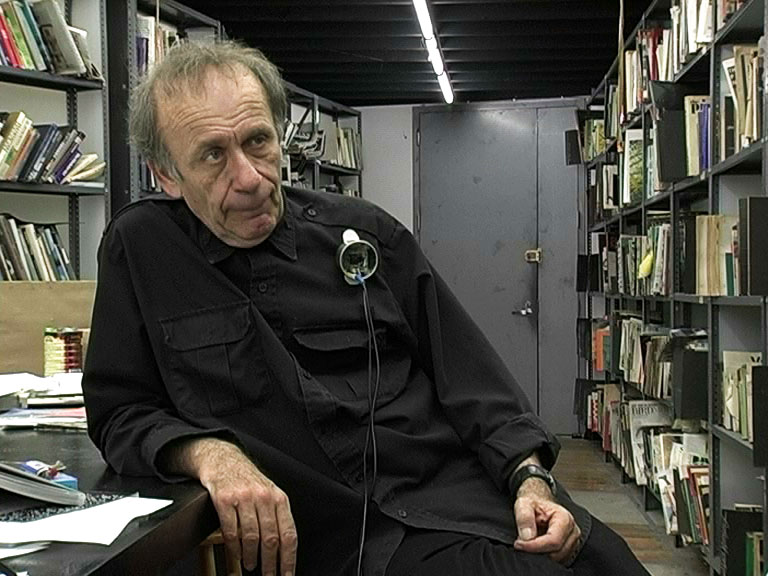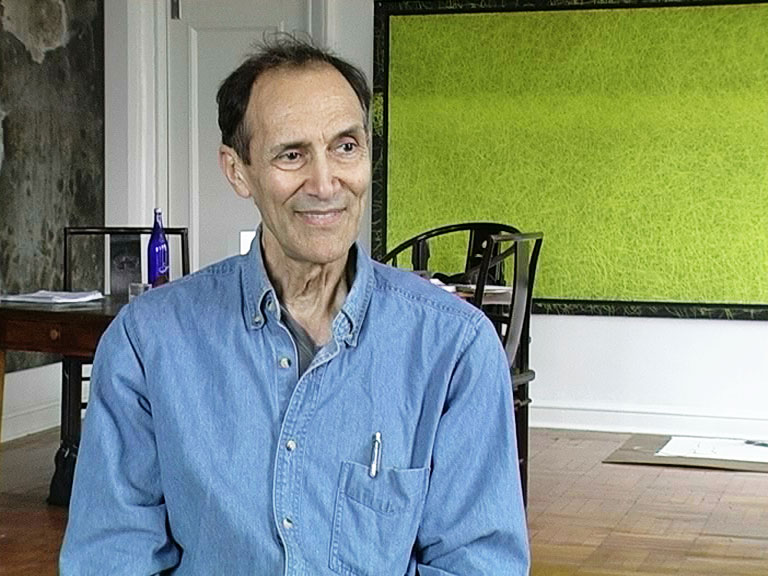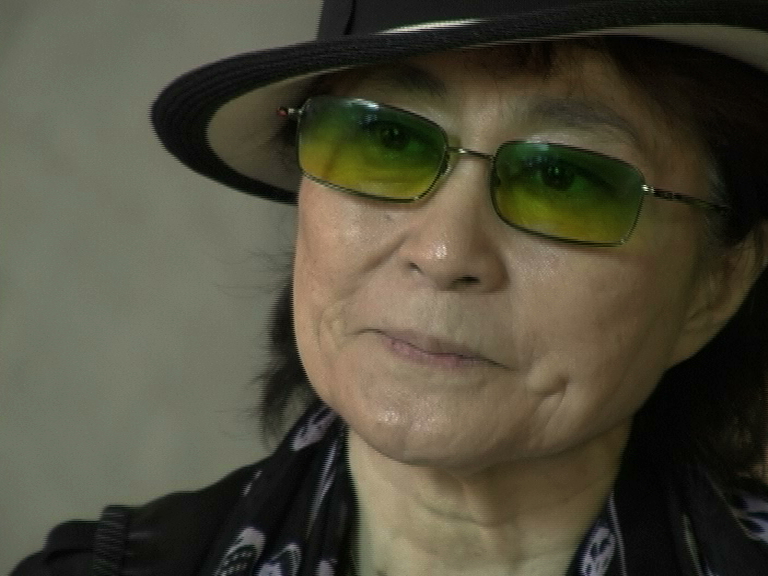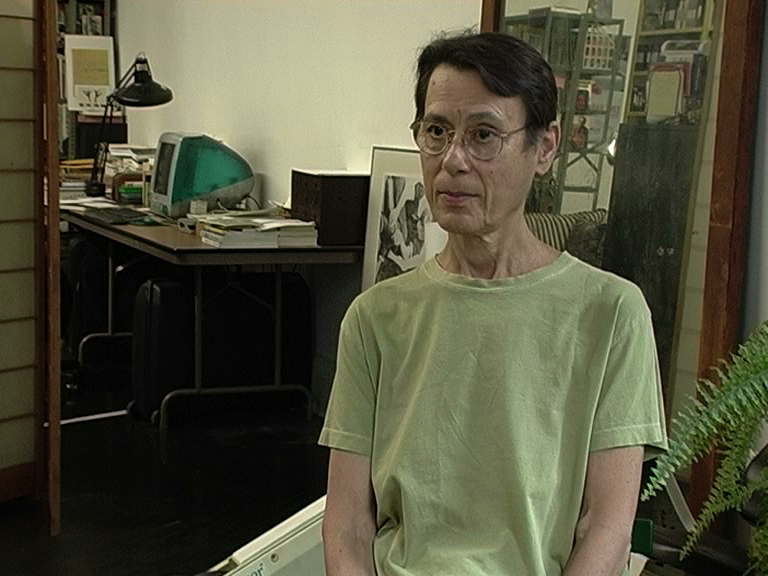S.R.: What was the strongest influence on your work?
A.F.: The strongest influences on my work were probably, at least initially, from critics more than artists and that would be Craig Owens and Benjamin Buchloh. I started studying with Craig Owens in… 1983 when I was seventeen years old. And he is the person who basically introduced me to critical theory and also to institutional critique although he himself wasn’t so directly associated with institutional critique or Conceptual art. But at that time I also started reading Douglas Crimp and Benjamin Buchloh, and shortly thereafter I also met Benjamin Buchloh and started taking his class. Through Benjamin Buchloch I met Louise Lawler and also Allan McCollum who, as artists, were very important influences on me. I wrote about Louise Lawler’s work in the mid-80s, in 1985, and also on McCollum’s work in 1986, and thinking through their work was a very important process. In terms of older artists and other generations of artists who influenced me – Yvonne Rainer was a very important influence. I studied with Yvonne at the Whitney Program in 1984/85. And at that time, she was releasing “The Man who Envied Women”. And “The Man who Envied Women” along with “Journeys from Berlin”, even more “Journeys from Berlin”, are really central to the way that I began to approach constructing texts and pre-constructing performance scripts, particularly in terms of trying to work through some relationship between the subjective and the social in a textual way, but even more particularly with “Journeys from Berlin” in terms of dealing with text in a discursive form in a spatial rather than a narrative way. A lot of my later performances which are constructed around a kind of mapping of positions, like “May I help you?” and then also “Official Welcome” and “Inaugural Speech” as well as other work that I’ve done, like my project for the Generali Foundation, which involves sort of mapping different kinds of positions within a particular field and the relationship between positions is really very much influenced by her work, and particularly by “Journeys from Berlin”. Oddly enough, it was only a bit later that I was exposed in a very strong way to the work of Hans Haacke. My first encounter with Hans‘s work was through text, through writing about his work, and then there was a retrospective in the New Museum in the mid-80s, I think it was in `86, and then I met him in `89. There was a somehow longer process for me of taking in all of his work and the great range of his work and his practice of mapping and his approach to social and cultural systems which also became a very big influence. But because of the sort of prior influence of Yvonne Rainer and her strategies and also Louise Lawler. It’s funny that for me those conceptual strategies were sort of filtered through performance in a way from the very beginning. Through performance and through a conception of institutional critique that for me in the beginning I didn`t… – It was only later that I sort of really came to have a fuller understanding what the relationship was between institutional critique and Conceptual art. I mean now I say institutional critique is a tendency within Conceptual Art, but at that time I associated Conceptual art very much with Joseph Kosuth, Art & Language, with this sort of Anglo-American axis of Conceptual art. And I thought of institutional critique really almost as a kind of an independent practice, and later on I developed a fuller understanding of that history. And then others – Martha Rosler was a very big influence, Mary Kelly was a big influence, Adrian Piper was a big influence – although a little bit later.
S.R.: So the second question: Which practice in the history of art is your favorite? Can you say “This one, That one.”?
A.F.: Oh God.
S.F.: Or is this not possible?
A.F.: A practice? You mean a particular artist practice or?
S.R.: Yes, yes.
A.F.: …is my favorite? I can`t say. Yvonne Rainer has to be one of my favorite artists but she is a dancer and a film-maker. So I wouldn`t – it would be Yvonne Rainer on the one hand as a dancer, film-maker, performer and on the other hand it would either be Hans Haacke or Michael Asher for me. But I mean in the history of art, did you ask? What was the question again?
S.R.: You can choose. You can also say there was a manager who was my favorite and strongest influence.
A.F.: Favorite practice? My God. Well you see, I don’t just have one influence. I suppose most people don’t, but also not only in one field.
S.R.: It is just covering this area around saying “Well as I started as an art student, I adored – whatever”. Something like that. Well, you already figured it out. You said three, four names which were very important for you.
A.F.: Well, then, I mean, I started out really as a Lacanian. I mean, there are theoretical influences, intellectual influences, and then it would be Pierre Bourdieu. And I also think of Pierre Bourdieu as someone who very much had a practice as well as a theory of practice.
S.R.: So the next step is the third question. Can you figure out if there is something like a specific aim that you can formulate, that you are following with your own practice in the field of art? Is it possible to say something like that?
A.F.: Well, I‘ve had a few. My approach to art-making really starts with aims. There is this notion of “project work“ which I was also involved in trying to articulate in relationship to a notion of art as service-provision in the mid-90s. There’s another way of understanding a notion of project work as art with a project, as opposed to art simply that’s undertaken on a project basis, on a project-by-project basis. And that’s how I would like to understand my approach to art-making, that is a project. Having a project. It means something that is really larger than a specific medium or a specific practice, a specific procedure, a specific approach to art-making. But it’s an ongoing investigation which itself is subject to re-definition over time. And that’s also how I understand the tradition of critical practice that I identify with and I think I’m very located in historically. I’m the product of the Whitney Independent Study Program and the journal „October“ and the theories of post-modernism in the 80s around a notion of critical practice. My project as an artist, I think, has really always been not to pursue a critical practice but to try to understand what the conditions of a critical practice might be. Because I think what institutional critique teaches us, and also what the sociologies of art, such as Bourdieu’s, have taught us, is that many of the symbolic revolutions of art have in fact been more reproductive than critical and that a critique is very, very difficult to accomplish. And so I see that very much as what my aim as an artist is. Although it’s also important to me that how I understand critique is not only within a Marxian tradition of ideology critique or, I don’t know, rather the traditions of critique. But it’s also a kind of analysis in a psychoanalytic sense that a critical practice has to engage not only hidden interests or the kinds of interests that are produced by the institutions of art or by the field of art. But also in a psychoanalytic sense, the kinds of desires and fantasies that are produced by the field of art and institutions of art. And in relationship to those interests and to those desires and fantasies, I see my project as not so much being to expose or uncover them because in a way I think, they are on the surface. They are evident, they don’t need to be exposed. I always like to quote Lacan: „The desire must be taken literally“. It’s literal. But how they are produced – the mechanisms of the production and re-production of those interests and those fantasies. I also like to quote Bourdieu who said that the properly social magic of institutions is their ability to constitute anything as a legitimate interest, as an interest that will be objectively paid back within the economy of the specific field or institution. So that’s how I see my work.
S.R.: So we are again in a new issue. Now it’s more about the conceptual paradigms. Do you think that the conceptual paradigms are still in function?
A.F.: Are still functioning in the field of art or still current in my practice, a range of practices just in the field of art? Just general in contemporary art?
S.R.: Generally and contemporary in recent art, and of course it’s intended in the question how you yourself, your own practice locate yourself in a kind of historical conceptual movement or however you want to call it? And if it is something like that, if we can find something like that – Do you think that there are paradigms? And are they still in function? Like you said the analytical approach or the project approach.
A.F.: Sure I see conceptual paradigms everywhere within contemporary art. I mean I think there is very little contemporary art that could exist without Conceptual art. That could exist without Conceptual art and Pop art and to some extent feminism, feminist art practices in terms of different ways. Those are the three key-movements of the last forty years since 1960 that really defined contemporary art. And Minimalism before Conceptual art, because Conceptual art couldn’t exist in a way without Minimalism. In terms of the kinds of conceptual paradigms that one sees everywhere in contemporary art – l mean it’s the use of language, different forms of research, different forms of systematic approaches to production, site-specificity which isn’t exclusively a part of conceptual art. Most contemporary art photography could not exist without Conceptual art, the use of photography, the use of video. I mean it’s just everywhere. And I‘m thinking perhaps more substantively about sort of forms and procedures of contemporary art, but also in terms of how we see the position of the artist. And…
S.R.: What do you mean with the position?
A.F.: I mean the sort of distance that one finds in almost all contemporary practices from a notion of direct, immediate, spontaneous production that one finds in contemporary art. The mediation that one finds in contemporary art. Although you know again – I don‘t know it’s sort of hard to distinguisth what comes from Conceptual art and what comes from Pop art and what comes from what in terms of, for example, strategies of appropriation. We had a pre-conversation about originality, so I’m trying to kind of… – I’m trying to get there but I’m having a little bit of difficulty, because I think that all three of those – feminism, the women`s art movement and the influence of feminist theory on Conceptual art and Pop art all problematize the position of the artist. For me the three most important movements of the last forty years, without which contemporary art could not exist, are Conceptual art, Pop art and the women’s feminism, the women`s art movement. I think that all three of those movements problematized the position of the artist and artistic production in different ways, although somehow in parallel ways. You know, Pop art by introducing notions of… – and also Minimalism – industrial production procedures, commercial production procedures and also, of course, appropriation. Conceptual art also by introducing systematic production procedures, research, by introducing particularly through artists like Daniel Buren and Michael Asher a site-specificity that created a kind of dependence of production on context and a dependence of production on particular relations that existed within given contexts also. And then feminism, by raising questions about the nature of the subject of production, of the subject of imagination and creativity in the discourse of all art of that existed before. I don’t know, I haven’t thought about these particular kinds of issues for a while. I’m trying to link to what I think your interests are. Do you have another question?
S.R.: No, I want to continue with this because I think you broke, as you said something, you broke in one idea where you listed up feminism, women`s art movement.
A.F.: Feminism, Conceptual art and Pop art were the three that I mentioned.
S.R.: No, you had another…
A.F.: I said the “women`s feminism“ and “women`s art movement“ as a kind of putting it together.
S.R.: You want to say this again? To emphasize it or?
A.F.: I think I said it twice already. Sure but…– where do you think I can end up with that? Shall I just repeat what I said again? In a cleaner way?
S.R.: No, I remember just as you were talking that I thought there was a break that you wanted to say something about that. I`m not sure.
A.F.: No, I think that I said why.
S.R.: Maybe we just go to the next question.
A.F.: Yes.
S.R.: And then we can figure out. The last question in this set is how you describe your typical daily work as an artist. If it‘s possible?
A.F.: No, it’s not possible. I have no typical day.
S.R.: That was really convincing. Can you say this again?
A.F.: I don’t have a typical day. Sometimes my work as an artist is going to the gym and practicing Samba, sometimes it’s doing research in a library and reading critical texts and writing, sometimes it’s doing graphic design, sometimes it’s going to galleries and museums or being in an exhibition space and trying to install a show or making interviews. I have no typical day.
S.R.: Okay, these were the questions I have, stereotypical, but I think maybe it’s possible to focus a little bit on your concrete situation that you are preparing this big retrospective. If you don’t like the question you shouldn’t answer. I can imagine that this brings up again questions to yourself, you figured out as an artist, with a specific project, which is always in relation to the places where you are working, and the specific literature you read to specific points of your biography. So do you want to say something about this?
A.F. About what relationship? A retrospective might have to that kind of practice? Well, it might not have a strong relationship to that kind of practice. It’s a complicated question to answer because I… – Probably the most accurate way to respond to that question is to say this is a departure but it’s also in some ways a return because in fact there was a period of time basically between 1993 and 1998 when I pursued a kind of very programmatic and rigorous form of site-specificity that was largely defined by prospectuses that I produced in 1993, that defined my artistic activity as a service, that I could engage in with institutions but also with individuals potentially, and private foundations and different kinds of organizations. During that period of time I worked in an exclusively site-specific way where producing works that sometimes could be presented outside of those contexts in the form of video tapes or other kinds of documentation but were intended only to be able function in that immediate context. Prior to that, however, between 1984 and 1993, I did a number of other kinds of works as well, some of which were engaged with other forms of site-specificity – primarily what I think of is a kind of relational specificity – that could exist in different kinds of physical locations but we are more dependant on some of the social conditions of those situations, for example that it was a commercial gallery. “May I help you?” was a performance that was originally done in a commercial gallery in New York but it was also performed at the art fair in Cologne, and I thought of it less as site-specific than relationally specific and it could be displaced. And in the past few years, I returned a little bit more to that notion of site-specificity – partly out of an interest in engaging contemporary phenomena within the art world, and also contemporary conditions within institutions which I think have changed significantly in the past five or ten years in terms of the corporatization of museums, the spectacularization of museums, the emergence of the field of museums as a very competitive market that is competing with popular culture and popular cultural entertainment complexes and popular spectacle. It’s a very long answer, but I have the feeling I have to figure out for myself that many of the kinds of strategies that were developed by my generation of artists are based largely on the influence of previous generations of artists’ strategies of site-specific intervention, and a lot of the practices that I was sort of engaged with around the notion of services, I think, started to take on a different meaning and a different status within institutions as they became more and more corporatized. I think this is probably more true of the United States than of Europe, but I think it can also be seen here as well, particularly in Great Britain, but also in Germany. And also video and performance in particular became – as practices that emerged out of a critique of object-production in part, out of the critique of the cultural commodity – also became favored media within the context of museums for the delivery of spectacle and they became the media for the spectacularization of the artist also. At a certain point a couple of things happened. One, I stopped getting invitations to work in museums, so I kind of had to decide, either I was going to stop being an artist which I considered fairly seriously. And around `88, `89, I was teaching, I was getting more involved in cultural policy studies and cultural studies contexts. And I was thinking, maybe I should sort of pursue that aspect of the work that I’ve done and continue to do research and to write about museums, about cultural institutions, but in a more academic mode rather than an artistic one. Or my other option was to return to other kinds of sites, to return to the gallery, which I rejected pretty much since 1993. And I decided that I would prefer to continue to be an artist, and that also meant at that point to try to turn my attention in a way to the position of the artist and the status of the artist, from what a lot of my work in the 90s and in the 80s had focused on which were other positions within the field of art: collectors, trustees, curators, patrons, educators and so on. The exhibition that I’m doing here, in fact as an exhibition probably could not exist or could not be done without the recent work that I’ve done which takes the form of video projection and video installation. Because most of my work prior to a few years ago does not exist in a material form. Not all of it, I mean there are some things that exist, because in addition to installations I did videos that exists, single channel videos and posters and also photographs, I worked with a lot of kind of media, audio installations which do exist in some form. And my approach to this exhibition and the form of the retrospective is really to just put everything in but also to try to subject my own practice to itself and to take this work that I produce that for different contexts which existed as a reflection very often on other artists‘ work withins those contexts or on other art contexts. And to bring it all together in a way that I’m hoping will create almost a kind of chaos of reflection, a kind of a layering of all these different moments of reflexive critique, not all of which were about artists or an artist. But my hope is that the exhibition will work out that they become in a way. They become more immediately reflexive in this context. For example sets of wall-texts which were produced to be installed with other artists` work will now be installed with my own work. It’s about in a certain way subjecting myself to my own critiques or subjecting my own work to my own critiques in a way that will be displaced but hopefully will also function. And perhaps one of the critiques that I’ll have to be subjecting myself to will have to do with my own transgression of my own artistic principles in doing this kind of exhibition. So maybe you can use the last part of that, without taking all of it. I can be so long-winded…
S.R.: It was a lot of material in a way.
A.F.: I mean the other thing is that I’ve been working for twenty years and at a certain point it’s important for me as an artist to be able to reflect on what I’ve done, and a lot of the work that I’ve done hasn’t really been documented in any form. I mean I’ve done a lot of projects, that there was an installation, a publication and a video, but the publication doesn’t… The publication – each part has its own piece, so there is no representation of the entire project and in that sense it`s… – I want things to exist – not necessarily physically as cultural commodities, but to be able to exist conceptually so that they can be reflected on, also by myself.
S.R.: From me, from our side everything was fine. We have to compress a little bit and things like that for sure. If you have another idea what you want to say about this field of… – The question of how the originality of conceptual art was developed. How some ideas like the critique of originality through appropriation and a different kind of subjectivity or a different kind of construction of the subject – If you want to say something there? I can imagine that you have some interesting ideas in relation to that.
A.F.: It’s funny because I haven’t… – Originality was such an important key concept in the critique of originality and of the author. It was such a key concept. Certainly, when I was being formed as an artist, but somehow it’s not something that I thought about for a long time. Probably mostly it’s because it becomes something that’s taken for granted. But I guess one of the things that I also take for granted is a bit of the critique of the critique, and that is that there was something also very idealistic about the critique of originality. That one always has to speak, just like autonomy, of relative originality, artists are relatively autonomous and there is relative originality. There is not an absolute originality, there is not an absolute invention. But I think – when I talk about Conceptual art, I do talk about the discoveries of Conceptual art. I mean, I still, in a way, I retreated to a pre-post-modern vocabulary and to certain ways that I think about conceptual art and minimalism because I think it was so radical. I think it was incredibly radical. The most important discovery of Conceptual art and the one that I feel the most profound effects of it, has to do with the critique of autonomy, with the discovery of the partial and ideological character of artistic autonomy. And I think what conceptual art uncovered with that discovery was a really profound and probably irresolvable set of contradictions, and also a kind of ambivalence that, I think, doing this exhibition now and kind of looking back at my work, I think that all of my work has been about trying to resolve in one way or another, and I’m probably at the point where I realize that it’s impossible to resolve. Probably the most important text for me about conceptual art is Benjamin Buchloh’s essay “From the Aesthetic of Administrations to the Critique of Institutions“. I don’t agree with everything he says in that. And I basically disagree with his conclusions, but I think it’s an absolutely fundamental analysis. I used to be able to quote his conclusion from memory. But that conceptual art‘s attempt to free art from – what is it called? – hierarchical modes of perception and from the sort of mysticism of art, and also involved a tremendous loss. I think it’s true that there is a loss, but I still think it’s a loss of… – Oh well, I`m not really in a condition to deal with…
S.R.: I think it was good that you took some references to texts in the addition now. To Buchloh and I think I like it, yes. There were some very good endings of sets, which we can use as the last word or something like that. We’ll see, I think there was a lot of useful material. Thanks a lot.
A.F.: I’m still thinking. But it’s funny because I think you associate… – I associate the critique of originality so much with this sort of feminist reading of Conceptual art in the 80s. I don’t think of it it’s something… – It’s kind of after the fact in a way. It’s a critique that was read into conceptual art in the 80s, wasn’t it? More than… – it depends, I suppose. If you are talking about the critique of the unique object, it was there from the beginning of conceptualism, but the critique of the originality of the subject production came much later.
S.R. Yes, I agree and I think you were talking about the recent developments in the 90s and I think in the 90s it was established, something like established, that “Okay, if you take a brush and start a painting, it’s always a reference to the whole critical thing and blah, blah, blah.” And I think in the last years it changed a little bit and I have… – In my view it’s looking a little bit like many young artists are just taking the brush and “inventing something new”. They think they are inventing something and also in the same time some are working on the trains of conceptual art and they think they invent something new. And sometimes they even didn’t know that exactly the same work was done in the beginning of the 70s, 80s. And that is interesting.
A.F.: Yes. That`s true. Right, in that regard I mean with young artists, you are teaching and I’m not. I’m actually just starting to teach in fall in Columbia. So I have no better idea what young artists are thinking. I might be very surprised and I might want to come back and revise what I had to say about it, about contemporary art right now. That’s probably true. But it’s an originality… – Right, it’s a different kind of originality there.
S.R.: Yes.
A.F.: Because it`s an originality of invention. It`s not that they think necessarily that their objects are original in the same way, in the sense of unique or… – because the strategies of appropriation are still so prevalent – but that their gestures are original. And very often that’s based on just a profound ignorance of the history of contemporary art. A friend of mine, I have a friend, who is a… – I don`t know if he invented it but he is the first person I heard it from. Cuauhtémoc Medina González, who is a Mexican art historian, worked a lot on Fluxus. He likes to say “Well, you have the Ready-made and then you have the “Already-made”. This describes so much of contemporary art, you know, it’s the “Already- made” !
S.R.: That`s right. I`m not so much focusing on criticizing those gestures or this habitus, I`m more interested in how are these kinds of reception are influenced maybe through mass media, interests of the corporatization in the museums and so on. Where they are looking for young geniuses and things like that. That changed I think in the last five, six years, it changed.
A.F.: In what way? That`s become more and more…
S.R.: They want to emphasize these gestures like “I’m a genius. I’m doing totally new paintings, nobody saw something like that.” Many people are – More and more people get used to this “Yeah, why not we have this so long discursive kind of art, now we can get back to a little bit more gesture and things like that.” And even if the people come back to retro-styles; different retro-styles, punk or the late 80s or whatever or go back to the 70s or so. They try to invent it. In Germany – I don’t know how it is in English – but in Germany in the last three years, everybody is speaking about “Yes, you have to re-invent it, you have to start it new.” Things like that as if there is a kind of believing that it’s possible to start from a tabula rasa, to start again, it’s not possible.
A.F.: I mean what I think its the most important critique to pursue now is to do what I don’t recall being part of the discourse of the 80s, but of considering how these representations of artists and of artistic production are so closely linked to particular economic regimes. And I really see this sort of new spectacularized, celebritized vision of the artist as the free individual pursuing new forms of freedom and satisfaction, as being a sort of ideological figure of the neo-liberal subject in the age of globalization. Even though that’s changing, in the past few years it changed a lot. Since the collapse of the internet economy and since September 11. But I think it’s a very ideological representation. So the return to notions of originality, to the notion of the spontaneous creation and sort of the artist is a free subject, is extremely regressive. Actually it was part of the discourse of the 80s because we were talking about that in relationship to neo-expressionism and Reaganism. So, in fact, what we have now, it’s interesting. Okay, it’s a kind of parallel relationship, but instead of neo-expressionism, instead of a set of artistic practices that are so patently aggressive as neo-expressionism was, you have that kind of ideological representation being produced around practices that in fact are the products of those practices in the 80s, of performance, video, installation, the whole range. And that’s the difference, which is disturbing.






